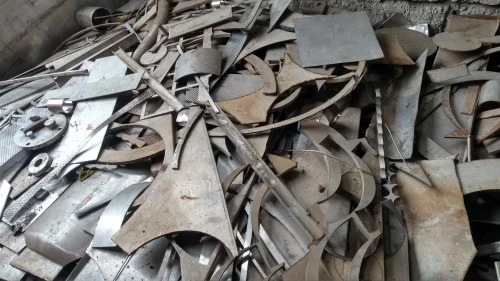Why Recycle Magnesium?
Magnesium is the lightest structural metal, weighing approximately two-thirds less than aluminum. Known for its high strength-to-weight ratio and excellent machinability, magnesium is widely used in industries requiring lightweight, durable materials. Recycling magnesium offers several key benefits, both environmentally and economically:
- Reduced Environmental Impact: Mining and processing new magnesium ore require significant energy, resulting in greenhouse gas emissions and waste. Recycling scrap magnesium cuts down on these impacts, supporting a cleaner and more sustainable manufacturing cycle.
- Energy Savings: Recycling magnesium requires only about 5% of the energy needed to produce primary magnesium from ore. This energy reduction translates to lower production costs and a smaller carbon footprint for manufacturers.
- Cost-Effectiveness: Recycled magnesium is often more affordable than virgin magnesium, making it a cost-effective choice for industries focused on minimizing expenses while maintaining high-quality production standards.
- Endless Recyclability: Magnesium can be recycled indefinitely without losing its strength or durability, allowing for the continued reuse of this valuable metal.
Sources of Magnesium Scrap
Magnesium scrap comes from a variety of sources, often as a byproduct of manufacturing processes. Here are the primary sources:
- Automotive Parts: Magnesium is extensively used in the automotive industry for parts like engine blocks, gearboxes, steering wheels, and seat frames. The transition to lighter, more fuel-efficient vehicles has increased magnesium’s popularity, leading to more magnesium scrap from old or discarded auto parts.
- Aerospace Components: Magnesium’s lightweight properties make it ideal for aircraft components, where weight reduction is crucial for fuel efficiency. When aircraft are decommissioned, they become a significant source of magnesium scrap.
- Consumer Electronics: Magnesium alloys are commonly used in laptops, tablets, and mobile phones due to their lightweight, durable nature. E-waste recycling facilities often collect magnesium scrap from discarded electronics.
- Industrial Machining Scrap: Many manufacturing processes produce magnesium shavings, offcuts, and other waste materials that can be collected and recycled. Industries that machine or cast magnesium components generate scrap that is relatively easy to recycle.
The Magnesium Scrap Recycling Process
Recycling magnesium scrap is a straightforward but delicate process due to magnesium’s highly reactive nature. Proper handling is essential to prevent oxidation, which can lead to wastage. Here’s an overview of the recycling process:
- Collection and Sorting: Magnesium scrap is gathered from various sources and sorted to separate it from other metals and contaminants. Sorting ensures that the final recycled product is of high quality.
- Cleaning: Once sorted, the scrap is cleaned to remove any residual oils, dirt, and coatings. This step prevents contamination in the recycling process.
- Melting: The cleaned scrap is then melted in a controlled environment, usually in the presence of an inert gas like argon, to prevent oxidation and combustion. Magnesium has a low melting point, which reduces energy consumption during melting.
- Purification and Refining: During the melting process, impurities are removed to achieve the desired purity level. This step ensures that the recycled magnesium can meet the quality requirements for industrial applications.
- Casting: The purified, molten magnesium is cast into ingots or other shapes for easy transportation and future processing. These cast magnesium products are then ready for use in various industries.
Applications of Recycled Magnesium
Recycled magnesium is used across a range of industries due to its lightweight and durable nature. Here are some of the most common applications:
- Automotive Industry: Recycled magnesium is used to manufacture engine blocks, transmission cases, seat frames, steering wheels, and other structural components. It allows automakers to reduce vehicle weight, leading to better fuel efficiency and lower emissions.
- Aerospace Industry: Magnesium alloys are widely used in aircraft manufacturing for components that require strength but need to be as light as possible. Recycled magnesium in aerospace helps reduce costs without compromising quality or safety.
- Electronics: Due to its lightweight and durability, magnesium is often used in electronic devices like laptops, smartphones, and cameras. Recycled magnesium alloys are ideal for creating casings, frames, and internal components for consumer electronics.
- Medical Equipment: Magnesium’s biocompatibility makes it suitable for use in the medical field, particularly in orthopedic devices and implants. Recycled magnesium can be used to create high-quality, cost-effective medical components that are lightweight and durable.
- Industrial Machinery: In industries where weight reduction is critical, such as robotics and automation, magnesium alloys help reduce component weight without sacrificing strength. Recycled magnesium is an affordable option for manufacturing durable, lightweight parts in these applications.
Challenges and Considerations in Recycling Magnesium
While magnesium recycling offers significant benefits, it also presents unique challenges:
- Flammability: Magnesium is highly flammable, especially in its powdered form. Melting and processing magnesium require strict safety protocols to prevent fire hazards.
- Oxidation: Magnesium oxidizes easily when exposed to air, which can lead to wastage if not handled properly. Recyclers use controlled atmospheres with inert gases to prevent oxidation.
- Impurities: Contaminants in scrap metal can reduce the quality of recycled magnesium. Proper sorting and cleaning are essential to ensure a high-quality final product that meets industry standards.
The Future of Magnesium Scrap in a Sustainable Economy
The demand for magnesium, especially recycled magnesium, is set to grow as industries continue to prioritize lightweight materials to improve energy efficiency and reduce environmental impact. Automakers are increasingly incorporating magnesium into electric and hybrid vehicles to reduce battery load and increase range. The electronics industry, driven by consumer demand for lighter devices, will continue to rely on magnesium alloys for portable devices.
With advancements in recycling technology and handling processes, magnesium recycling will become even more efficient, safer, and more cost-effective, making it a key player in the sustainable metals industry.
Conclusion
Magnesium scrap recycling is an efficient and sustainable way to meet the growing demand for lightweight metals across various industries. Recycled magnesium provides high strength, corrosion resistance, and durability, making it an invaluable resource for automotive, aerospace, electronics, and medical applications. As industries strive for greener, more cost-effective production methods, magnesium scrap recycling stands out as a practical solution that benefits both the environment and the economy. Embracing magnesium recycling will help shape a future of sustainable manufacturing, where high-quality materials are available without the high environmental cost of primary metal production.
 Diverse Perspectives: Insights & Stories Exploring Ideas, Sharing Knowledge
Diverse Perspectives: Insights & Stories Exploring Ideas, Sharing Knowledge





